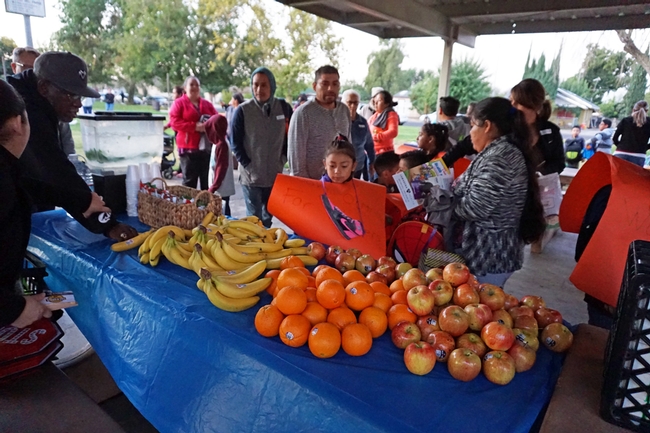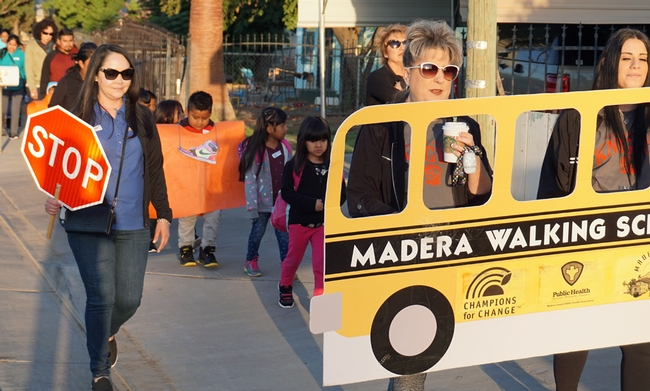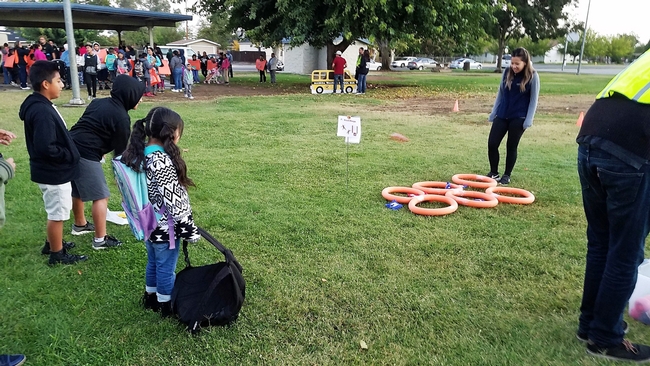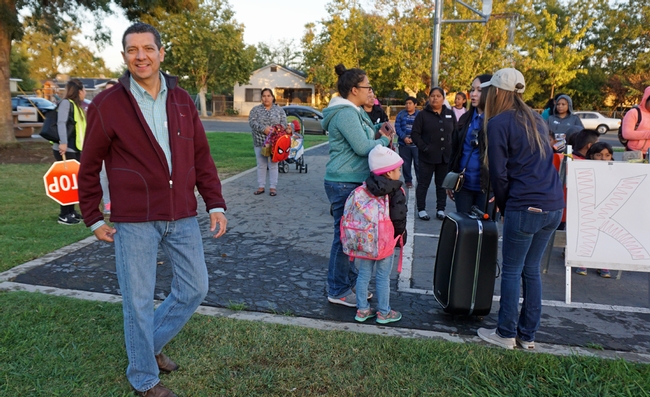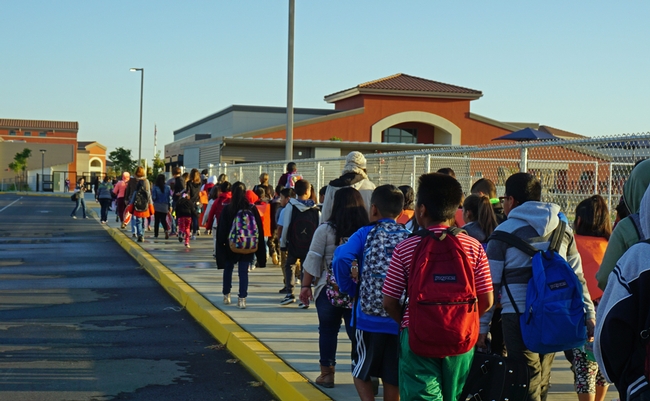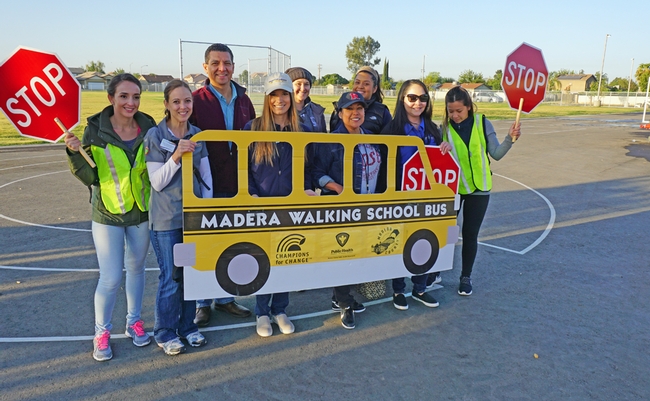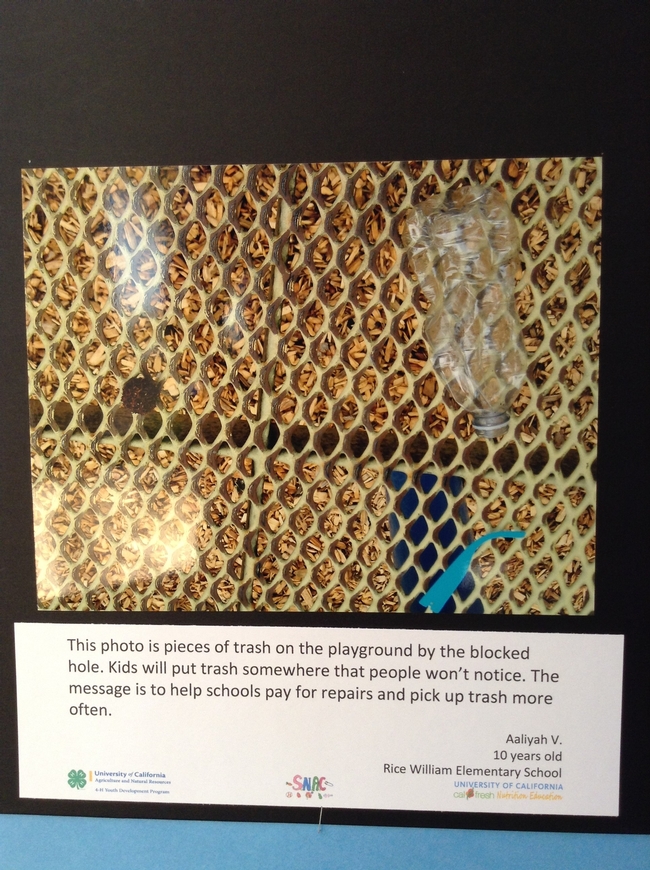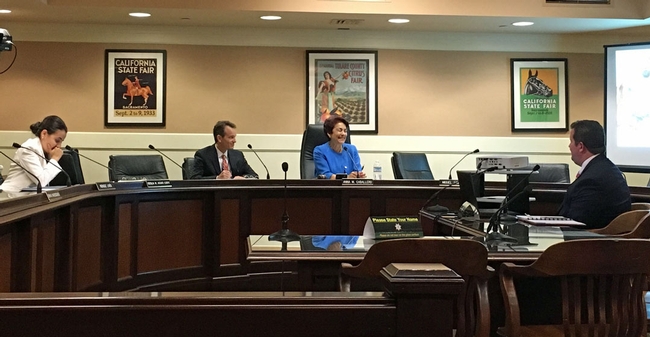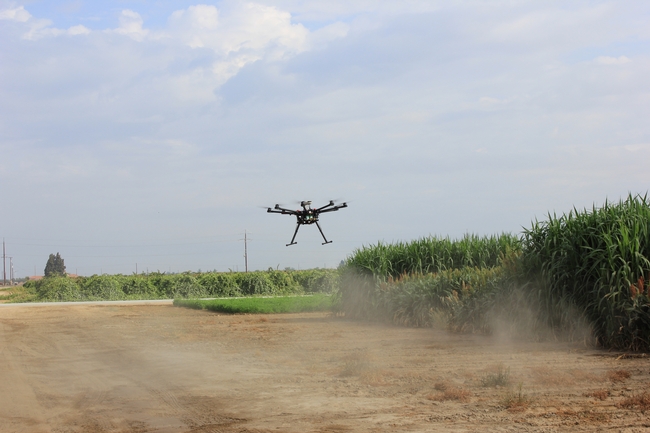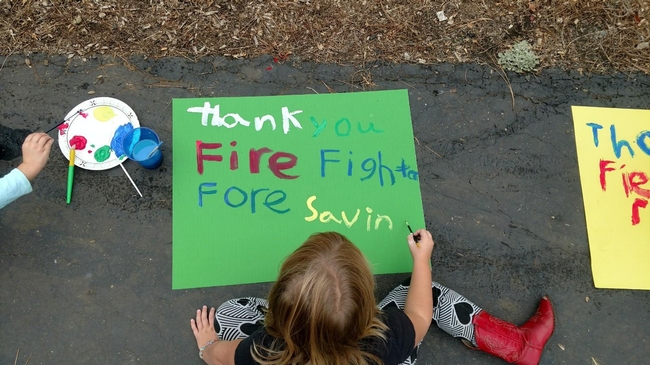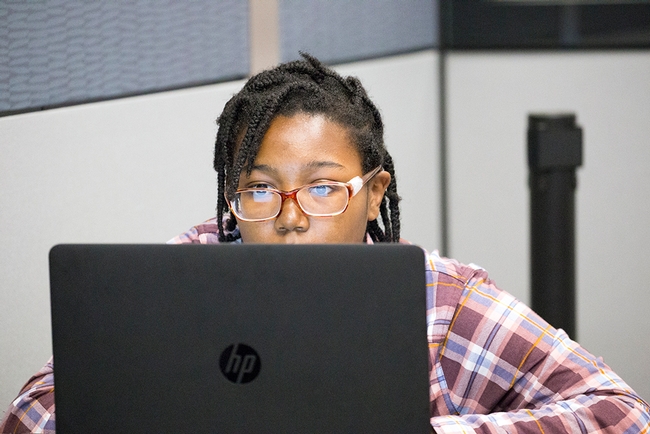- Author: Jeannette E. Warnert
In the pre-dawn chill, UC CalFresh nutrition educators were at McNally Park in Madera Oct. 4 preparing for dozens of kids who were invited to come early for fresh fruit, active outdoor games and the opportunity to walk to school as a group. The event marked International Walk to School Day, part of a year-round movement for walkable communities and safe routes to school.
Walking (or bike-riding) to school provides benefits to the children and the community. Safe pedestrians and bicyclists start the day with physical activity, reduce traffic congestion around schools, and cut pollution.
UC CalFresh educators walked with students heading to Virginia Lee Rose Elementary School, Madera's newest elementary school, which opened this fall. The UC CalFresh Nutrition Education Program, offered by UC Cooperative Extension in Madera County, works in partnership with schools and teachers to provide a comprehensive nutrition education program to students. Since Virginia Lee is new, the walk-to-school event offered an opportunity for UC CalFresh educators to meet students and interact with teachers.
Teaching healthful eating habits is just one of the UC CalFresh goals in local schools.
"We provide a comprehensive approach for healthy schools, focusing on policy, systems and environmental changes as well as teaching healthy eating," said Karina Macias, UC CalFresh manager for Fresno and Madera counties. "Access to a save route to school gives students an opportunity to increase physical activity. It is a component of a healthy lifestyle that we encourage."
Madera's annual Walk to School Day event was organized by UC CalFresh and the Madera County Public Health Department SNAP-Ed Program.
- Author: JaNessa Willis
- Author: Shannon Klisch
- Author: Katherine E. Soule
An important aspect of positive youth development is engaging youth in meaningful activities, building youth capacity, and helping youth develop leadership skills. As older students on their elementary school campuses, fifth- and sixth-grade student leaders can have a significant role in inspiring peers to make positive and healthy lifestyle choices. Student leaders can also have great impacts on their own families and communities by sharing what they know about nutrition and health in culturally relevant and accessible ways that inspire those around them.
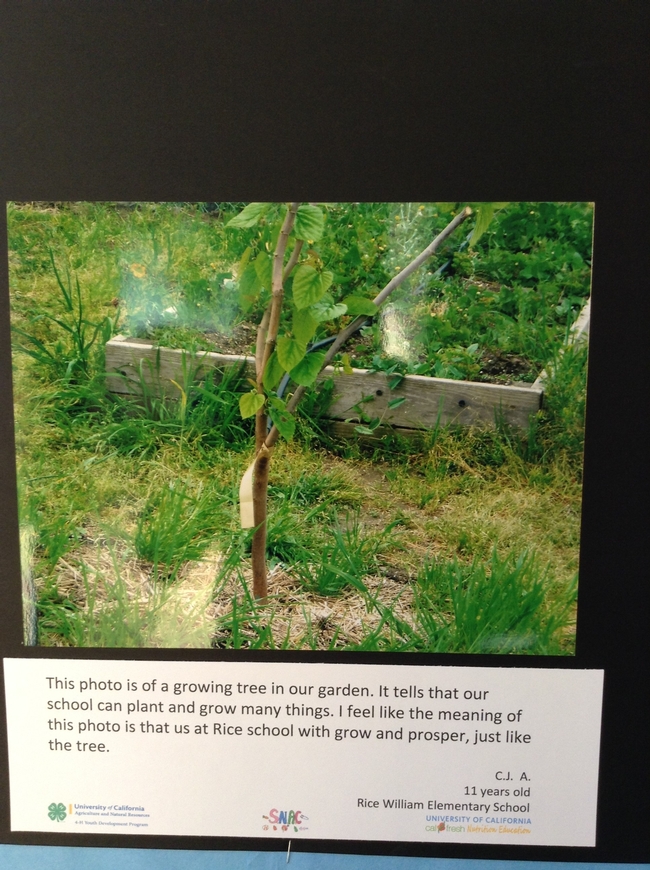
The 11-week photovoice project started with students and project leaders getting to know one another and building trust with icebreakers, energizers and games. The students came together weekly to discuss barriers and opportunities for healthy play, physical activity and healthy food in their schools. Next, students learned to define important terms like “advocacy” and “photovoice.” Through these meetings and discussions students continued to explore what it means to “have a voice” or “a platform to advocate for change” from within their youth perspective.
Over the course of several weeks, students took walking field trips around their school campuses and photographed images of their school environment that they found significant. Although each student took a number of photographs, they each selected one image that was the most significant to them. Each student shared with the rest of their club why that image was significant and how they felt when they looked at it. Students then wrote a short description about their photograph, why they selected that image, what the image meant, and how that meaning was important to them as a student leader and to their school community. The project culminated with the youth sharing their collective voice with other students, school administrators, teachers and parents.
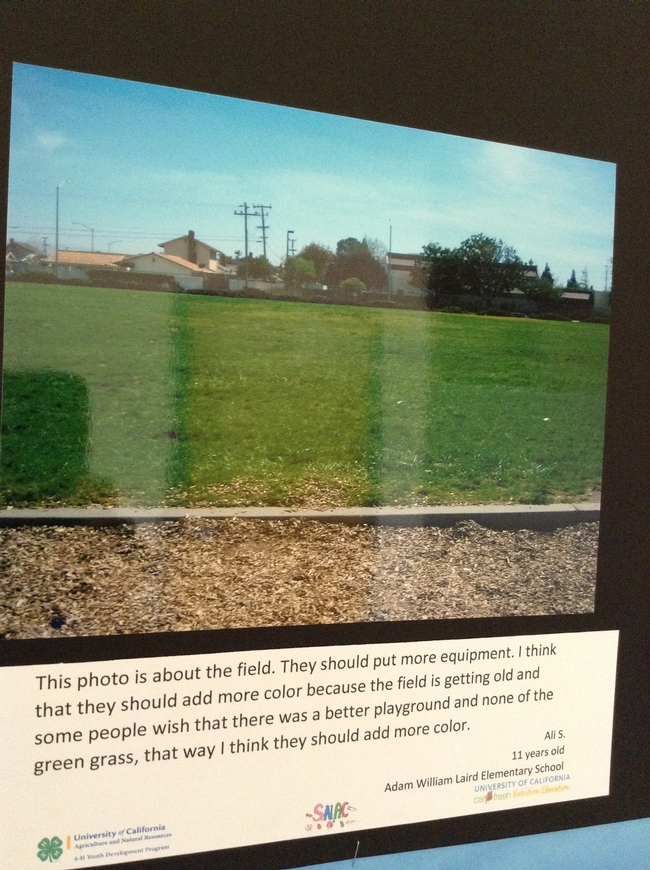
After the months' long project, it was rewarding and humbling to see the student leaders sharing their unique youth perspective. The youths' communities found value in their photographs as well. Images were framed and displayed alongside their interpretative narratives at local school sites, the school district office, the county fair, and other community sites as testaments to youth vision for healthy and thriving school communities. The school district displayed several of these photovoice stories in the halls of the central district building. Three students entered their photos at the Santa Barbara County Fair. This is notable because none of these students had previous experience entering their work at a county fair and they were able to gain wider exposure and recognition for their work. One student won first place and another received an honorable mention in the county-wide youth photography competition.
The UCCE Youth, Families and Communities Program in Santa Barbara County focuses on deepening engagement in nutrition education with youth and families in low-income settings while increasing positive youth development outcomes.This photovoice project was funded through local grant awards from the National 4-H Council in collaboration with Lockheed Martin, and UC CalFresh Nutrition Education Program, which is a joint agreement among the U.S. Department of Agriculture/Food and Nutrition Service (USDA/FNS), the California Department of Social Services (CDSS) CalFresh branch, and the University of California Cooperative Extension (UCCE).
- Author: Jeannette E. Warnert
Even as the digital revolution has changed the world, there are thousands of California residents in rural areas that do not have an internet connection adequate for engaging in modern technology.
With offices in all California counties and several research centers located in remote locations, UC Agriculture and Natural Resources Vice President Glenda Humiston and UC ANR Chief Innovation Officer Gabe Youtsey believe UC ANR is in a position to forge partnerships with government, industry, and other academic organizations to connect rural Californians with high-speed internet.
Youtsey testified at a rural broadband informational hearing in Sacramento on Aug. 28 held by the Assembly Select Committee on Economic Development and Investment in Rural California, chaired by Rep. Anna Caballero (D-Salinas), and the Communications and Conveyance Committee, chaired by Rep. Miguel Santiago (D-Los Angeles.)
In his testimony, Youtsey characterized the presence of UC ANR in California for the lawmakers.
“We are a network, not a place,” he said. “We have more than 1,500 very applied academics; I call them academics with muddy boots because our job is really to turn science into on-the-ground solutions.”
While it is potentially expensive to bring broadband internet connectivity to every resident of California – from the far reaches of Modoc County in the north to remote desert communities near the Mexican border in the south – those communities' lack of high-speed internet is also exacting a high medical, social, and educational cost.
“High-speed connectivity is needed in rural communities not just for entertainment,” Youtsey said. “It's about online education, medical care, banking and businesses. Digital inclusion is an issue of economic justice.”
Youtsey likens the spread of broadband internet to a successful initiative in the 1930s to promote rural electrification in the U.S. The program was managed by the U.S. Rural Electrification Administration, one of the agencies created under the New Deal, President Franklin Roosevelt's sweeping legislation that helped lift the United States out of the Great Depression.
The government's role in “internetification” could be an investment in infrastructure, Youtsey said.
“It is very expensive to bring wired internet connectivity to places where it has never been before,” Youtsey said at the hearing.
At one UC ANR location, the UC Sierra Foothills Research and Extension Center, laying a wired connection was cost prohibitive.
“The internet provider had to beam a signal from Marysville, up to the top of the Sutter Buttes, and then beam 26 miles across the valley to our location. That was about a $150,000 one-time set-up cost. That's just not realistic in many cases,” he said.
Youtsey said UC ANR would like to leverage its remote locations as launch points for public-private partnerships for rural broadband, a plan that dovetails an initiative now being considered by state legislators.
Assembly Member Eduardo Garcia (D-Coachella) has introduced AB 1665, known as the Internet for All Now bill, which aims to ensure social and economic equity for all Californians in the digital age. This bill would approve funding by Dec, 31, 2022, for infrastructure projects that would provide broadband access to no less than 98 percent of California households.
“We support passage of the bill, but we're not going to stand still,” Youtsey said.
Already, UC ANR is creating partnerships with rural communities to provide shared internet connectivity. One project underway is located at the UC Kearney Agricultural Research and Extension Centernear Parlier, a 15,000-resident community in rural southeast Fresno County that has one of the state's highest percentages of Latinos. After connecting the center with fast one-gigabit speeds, UC ANR is planning to outfit all 330 acres with outdoor wireless coverage to support research and innovation. The next step will be to pilot a public-private partnership with the local community to work with the center and a vendor to share costs and make affordable broadband upgrades for both the residents in the community and UC researchers.
Another project is located at the UC Lindcove Research and Extension Center at the eastern edge of the San Joaquin Valley near Exeter, an agricultural city of 10,000 near the Sierra Nevada foothills.
“We don't have this site lit up yet. We're working hard on beaming a signal from Visalia, 25 miles away,” Youtsey said. “Once we have it here, we're in the heart of the state's citrus region. We're surrounded by commercial citrus farmers who all struggle immensely with getting broadband. We hope to be part of the solution.”
- Author: Jeannette E. Warnert
Late in August, the Helena Fire closed six schools in Trinity County and forced 2,000 people out of their homes. Ultimately, 70 houses were destroyed and Gov. Brown issued a state of emergency in the mountain community.
In the midst of the tragedy, UC Cooperative Extension nutrition education specialist Margarita Alvord and program supervisor Janessa Hartmann quickly developed a plan to serve the children they couldn't reach during the school closures and organized activities to support local families. Alvord brought together several organizations, including Human Response Network, First 5 Trinity County, and Weaverville Parks and Recreation District to address the needs of the fire-stricken community.
The agencies developed a plan to provide youth activities, including physical activity, nutrition education, arts and crafts, and games. They served healthy lunches and provided three days of programming at the Local Assistance Center in Weaverville.
"We received significant positive feedback from parents, teachers and community members, showing Trinity County's strength, resilience and solidarity," Hartmann said. "The staff at UCCE Trinity County seized the opportunity to ensure the students, families, and community displaced during the fires were offered opportunities to learn and have fun in a safe place."
- Author: Jeannette E. Warnert
4-H members in Santa Clara County will work with Google employees to develop computer science technical skills, digital fluency, creativity and problem solving skills in a new 10-week program made possible with a donation from the Silicon Valley internet search giant.
Youth participants, teen leaders and adult volunteers are now being recruited to take part in the 4-H Computer Science Career Pathway, a weekly series that begins Sept. 27. The pathway will translate abstract concepts into practical experiences the participants can use to explore the field of computer science. Fill out an online interest form to get more information.
“We are thrilled to begin our partnership with Google and prepare our youth for successful careers in any field they choose through this innovative program,” said Fe Moncloa, the UC Cooperative Extension 4-H Youth Development advisor in Santa Clara County.
The outreach will go beyond the 10 weekly sessions. During the first year, an estimated 700 youth in traditional 4-H community clubs, in after-school programs, and in programs offered by partnering community organizations will be touched by 4-H computer science. Booths will be set up at festivals and fairs to reach still more young people.
“There are many different opportunities for our youth to explore computer science,” Moncloa said.
The Santa Clara program is one of dozens funded through the National 4-H Council, which received a $1.5 million grant from Google to build skills youth need for the future. Santa Clara is the only California county involved.
“We don't know what the jobs of tomorrow will look like,” said Charlotte Smith of Google.org when the grant was announced. “Some of them might require computer science skills, but it's much more than that – problem solving, collaboration. We want to give kids as many kinds of tools as we can so they can succeed in any discipline and in any field.”
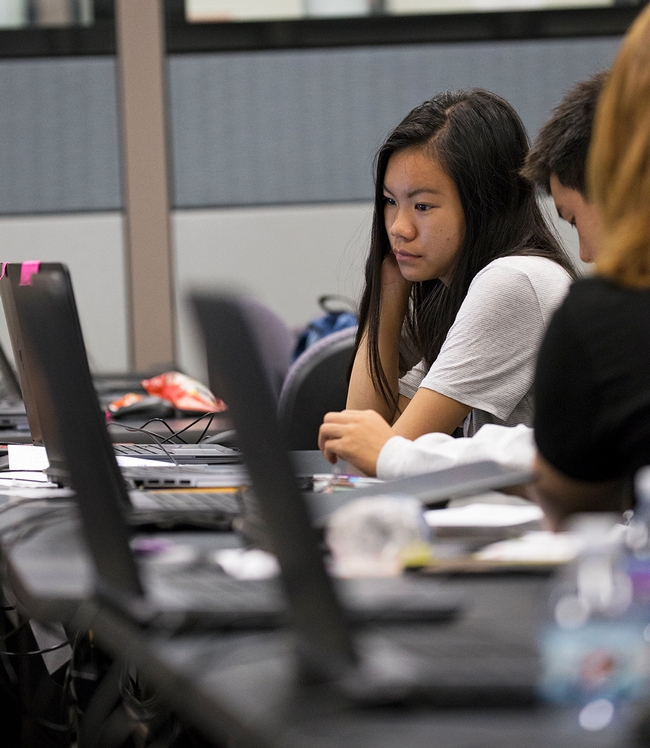
To reach underserved youth in Santa Clara County, 4-H will partner with two well-established community organizations. Youth Alliance, based in Hollister, provides innovative and culturally relevant services to local youth and families. Youth Alliance offers after-school programs for elementary and junior high school youth to give children a safe place to spend afternoons, get homework help and participate in cultural arts programs.
A second community partner is Sacred Heart Community Service in San Jose, which assists families with a wide variety of needs, including after-school programs, housing, food, nutrition education, citizenship classes and English-as-a-second-language training.
Santa Clara County UC Cooperative Extension 4-H has formed a team to launch the 4-H Computer Science Career Pathway.
UCCE 4-H program representative Claudia Damiani will train college students to offer the computer science curriculum to young people in Youth Alliance and Sacred Heart Community Service programs.
Google employee and 4-H volunteer Curtis Ullerich will teach the computer science curriculum to other volunteers in Santa Clara County.
“Some people think computer science is limited to coding,” Moncloa said. “Curtis, the way he teaches, he presents computer science in a different way. Sure, coding is one element, but there is so much more.”
Fiona Reyes and Santiago Piva are 4-H Teen Leaders in this project. They will teach and mentor youth, and collaborate with Ullerich to extend the curricula to 4-H volunteers.

